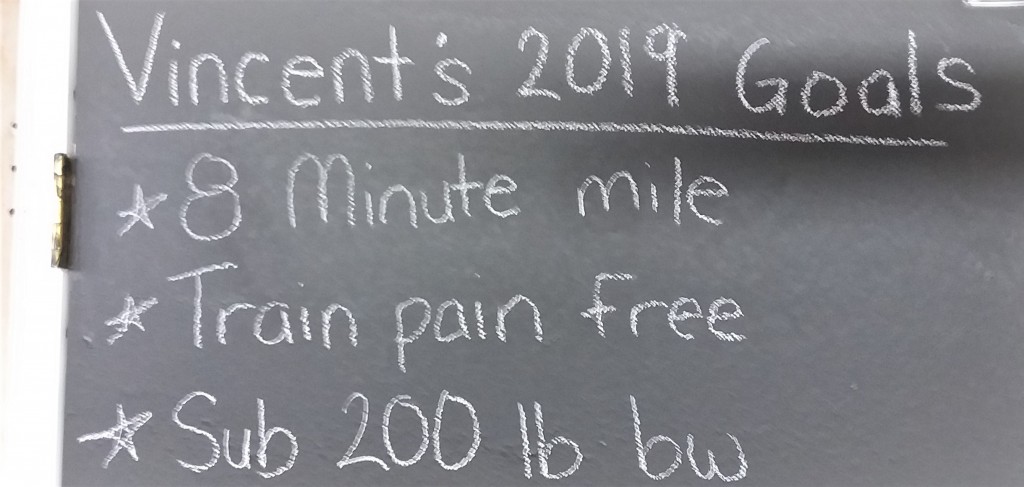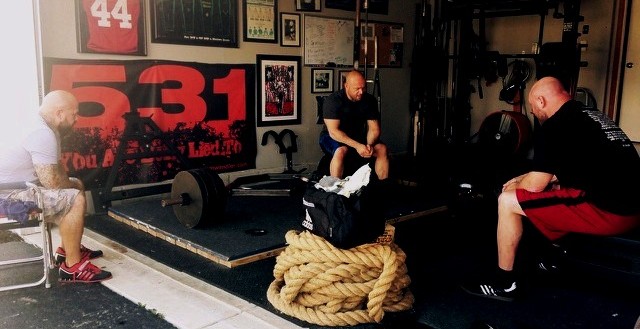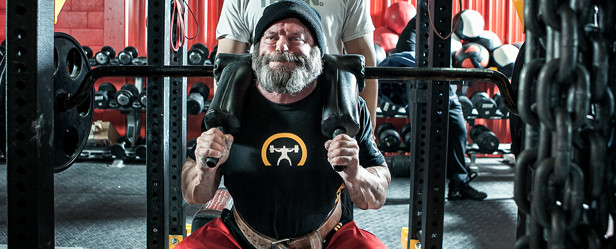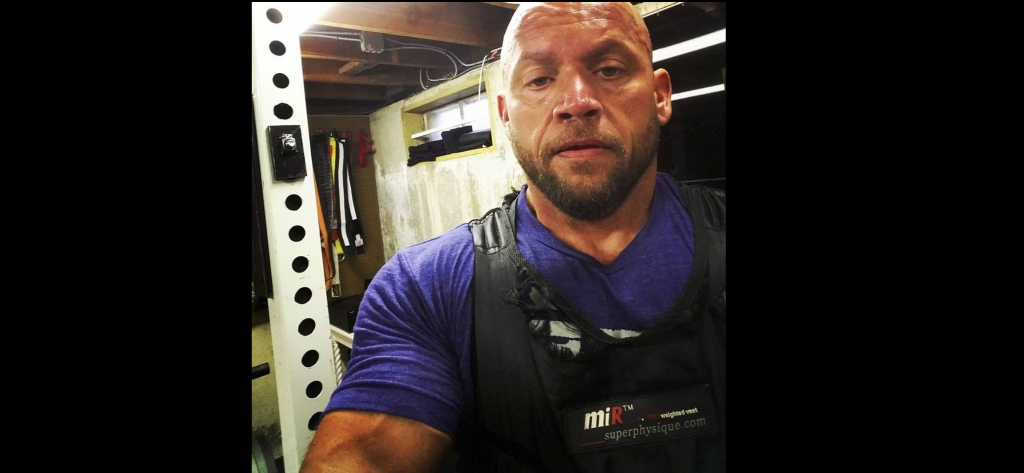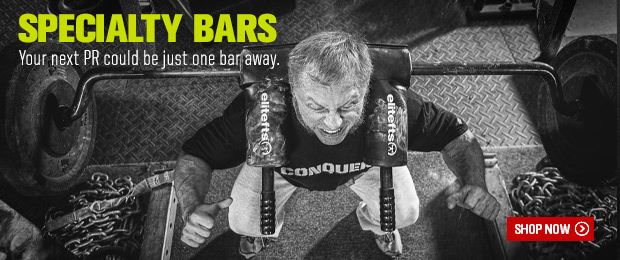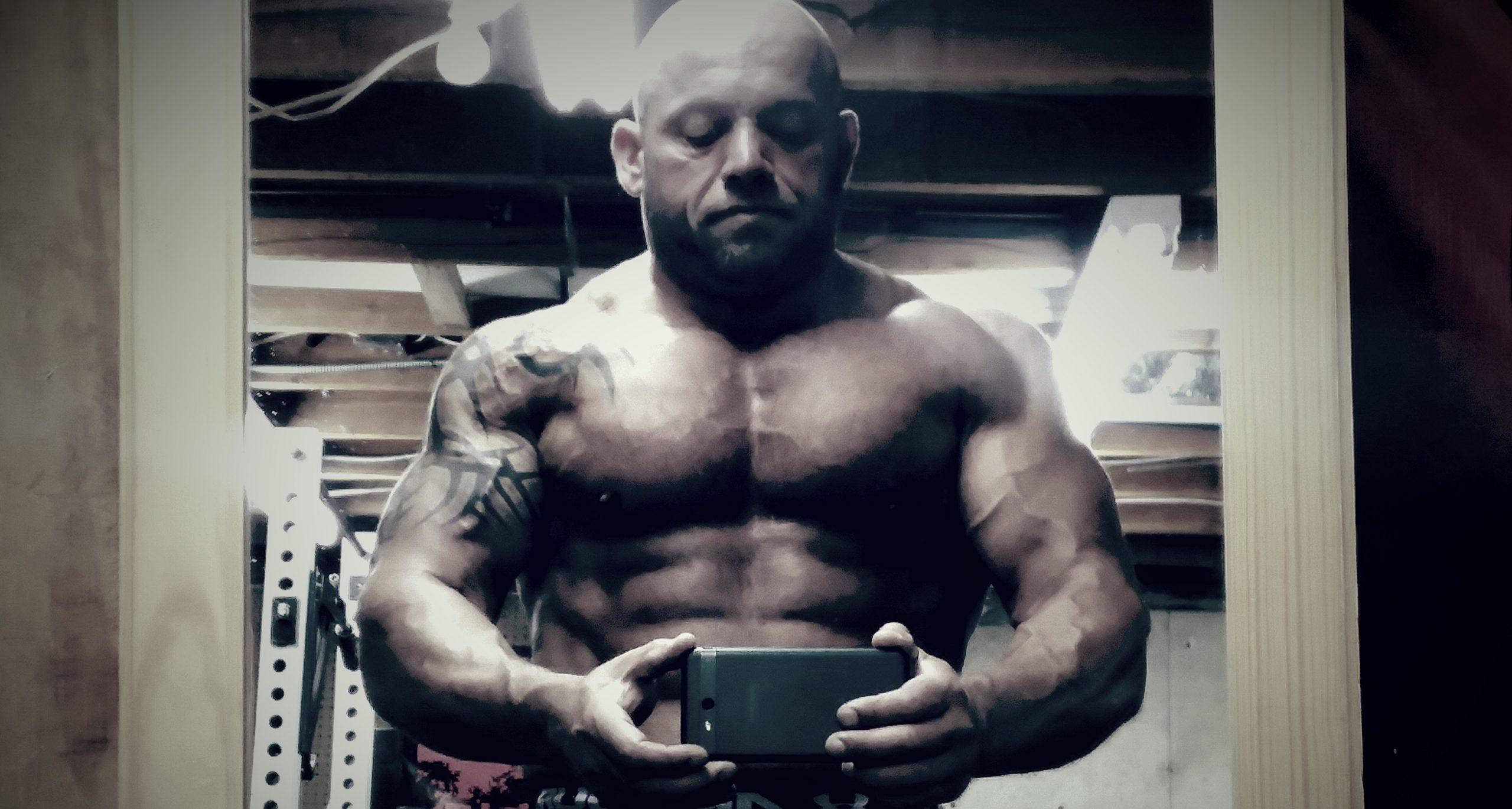
For anyone who has been following me, you know I have been struggling with my training. Ever since I came back from my hernia surgery, I have just not been able to pull things together.
Since not competing seriously in powerlifting for a number of years now, I have been a bit lost. Plus, I have not been willing to deal with nagging injuries like many of us do, not having that dangling carrot of the meet at the finish line.
A few weeks ago I blogged about how I was mistakingly looking for a one size fits all approach to dealing with my injuries. My circumstances are much different than most. I'm not going to find a rehab program for a 50 year old, ex powerlifting, strongman, world record holding bench presser, who has lost 120 lbs, dealing with multiple injuries and surgeries, who is trying to still kill it in the gym, while trying to improve conditioning.
Realizing I was beyond, your basic rehab protocol, shortly thereafter, I had the epiphany that the same would hold true for a training program. At that point, I sat down and prioritized what I really wanted for myself and how that coincides with my 2019 goals.
For 2019 my goals are to get my bodyweight under 200 lbs, train pain-free, and run an 8-minute mile. The only other considerations are that I want to stay as strong as I can and enjoy my training.
Luckily I have had four great influencers in my training over the years; Harry Selkow, Dave Tate, Jim Wendler, and Matt Rhodes. In their own way they have all helped me bench 600 lbs raw in three different weight classes, 900 equipped, win a strongman comp, lose 120 lbs, and improve my conditioning. I also have a really good voice of reason and sounding board in my wife Jessica.
All that was left was to take what I have learned from them as well as everything I have learned that works for me and put it together. While I have been beating myself up for the last couple of months for not being consistent in my programming, it turned out that it's all been necessary for this journey of self-discovery which ultimately led me down this awesome path.
For weight training, I will be sticking with conjugate programming on the main lifts. I like max effort work and I believe that it will assist me in maintaining as much strength as possible while dropping the next 10 lbs and upping my conditioning. I have found the work sets in most programs on main lifts have been detrimental for me. My body can't handle to volume. Plus, I'm stubborn and stupid, which is a bad combination for AMRAP work. I'll put myself in bad positions while being taxed just to push another rep and that's where I tear my body up. For a planned single rep max, I am able to keep my form and perform a clean rep.
The other reason I like conjugate training is that I have been feeling slow in my movements. Speed is definitely one of the first things to go with age. I was starting to program throws and jumps into my program so I'd feel more explosive with my bench, squat, and deadlift. Meanwhile, that's directly addressed with dynamic work in conjugate programming.
My assistance is where I'll depart from the normal conjugate routine. A while back when I was really focused on conditioning, Wendler had me start doing circuits. I found that they really helped in a number of ways. I enjoyed doing them and it was a way to push myself without necessarily worrying about the weights I was using. That's always a problem for an old meathead. The exercise choices were based on keeping a balance between body parts and are all movements that cause me zero pain.
For conditioning, I have narrowed things down to what works for me. A steady dose of heavy weight vest walks and airdyne sprints have helped me shave over a minute off of my mile time. I will, however, dabble in other endeavors for fun.
With all of the work mentioned above taking care of my body is a priority. For recovery, I contrast shower daily. I am stretching twice a day and am foam rolling three days a week. My nutrition is on point and I am increasing my sleep. I have also incorporated diaphragmatic breathing into my routine to help reduce stress and cortisol levels. I train a lot and push myself hard so it's important to address the parasympathetic nervous system. Lastly, I will be deloading after every third week. In the past, I was going six weeks, but between the lifting and conditioning, it has become apparent to me that I need that deload once a month.
Here's my BAMF program:
MONDAY
Training
Dynamic Incline Bench w/football bar 9x3@55-65%
*Circuit:(set and rep progression below)
Pullups
Triceps ext
Dbl lateral raise
Rope curls
Conditioning
8-10 10 second Airdyne sprints w/30 second rest intervals
Recovery
Stretching AM/PM
Diaphragmatic breathing 5 minutes
Contrast shower
TUESDAY
Conditioning
60-80 lb weight vest walk for 2-2.5 miles
Recovery
Stretching AM/PM
Diaphragmatic breathing 5 minutes
Foam rolling
Contrast shower
WEDNESDAY
Training (Mesocycle 1)
Max Effort Deadlift
Week 1: 3" Deficit Trap Bar Deadlift 3x1
Week 2: Band Trap Bar Deadlift 3x1
Week 3: 3" Block Trap Bar Deadlift 3x1
Training (Mesocycle 2)
Max Effort Squat
Week 1: SSB Front Squat 3x1
Week 2: Chain Squat 3x1
Week 3: Band Box Squat w/Buffalo bar 3x1
*Circuit:(set and rep progression below)
Sissy squat
Stiff leg trap bard deadlift
Reverse hyper
Hanging leg raises
Straight arm lat pulldowns
Conditioning
8-10 10 second Airdyne sprints w/30 second rest intervals
Recovery
Stretching AM/PM
Diaphragmatic breathing 5 minutes
Contrast shower
THURSDAY
Conditioning
60-80 lb weight vest walk for 2-2.5 miles
Recovery
Stretching AM/PM
Diaphragmatic breathing 5 minutes
Foam rolling
Contrast shower
FRIDAY
Training (Mesocycle 1)
Max Effort Bench
Week 1: Chain bench 3x1
Week 2: Shoulder saver bench 3x1
Week 3: Floor press 3x1
Training (Mesocycle 2)
Max Effort Bench
Week 1: Band shoulder saver bench 3x1
Week 2: Band bench 3x1
Week 3: Chain shoulder saver bench 3x1
*Circuit:(set and rep progression below)
Football bar row
Bent over dbl lateral raise
Barbell curl
Triceps pushdown
Conditioning
8-10 10 second Airdyne sprints w/30 second rest intervals
Recovery
Stretching AM/PM
Diaphragmatic breathing 5 minutes
Contrast shower
SATURDAY
Training (Mesocycle 1)
Dynamic Effort Box Squat w/Buffalo bar 12x2@65-75%
Training (Mesocycle 2)
Dynamic Effort Trap Bard Deadlift 10x1@80-90%
*Circuit:(set and rep progression below)
GHR
Back raise
Dbl lunges
Ab wheel
Rope face pull to press
Conditioning
Trail walk dumbbell carry (double or single)
Recovery
Stretching AM/PM
Diaphragmatic breathing 5 minutes
Contrast shower
SUNDAY
Conditioning
60-80 lb weight vest walk for 2-2.5 miles
Recovery
Stretching AM/PM
Diaphragmatic breathing 5 minutes
Foam rolling
Contrast shower
*WEEK 4 DELOAD
Training
No main lift will be done, circuits only using week 1 numbers
Conditioning/Recovery
Remain same
*For the circuits, there will be a six month progression. Mesocycle 1, Week 1 will be 3 sets of 8, 2 will be 3 sets of 10, and 3 will be 3 sets of 12. Mesocycle 2, Week 1 will start with 3 sets of 10, 2 will be 12, 3 will be 15. Mesocycle 3, Week 1 will be 4 sets of 8, 2 will be 4 sets of 10, and 3 will be 4 sets of 12. By the completion of 12 Mesocycles, I will be up to 5 sets of 15. At that point, I should be at my bodyweight goal and will be reevaluating my training.
For my Max Effort work I will be shooting for around 3 sets of 1 rep. That's the sweet spot I have found for myself over the years. I make sure to take gradual jumps to get work in. I'm also the guy who can get to the point of nearly passing out on a rep and still slap on 2.5 lb plates and grind out another single.
Regarding squats and deadlifts, you see that I alternate mesocycles for Max Effort and Dynamic work. I can't make any claims on the efficacy of it making one stronger. I just know I like doing both whereas in most conjugate programs you don't see a lot of programs set up with Dynamic Deadlifting.
Due to how the squats and deadlifts are set up I don't repeat exercises for two months. I purposely do the same for my bench. First, I like the variety. Second, this way I focus more on the work rather than perseverating over beating last months numbers. Chalk it up to a short memory, but I won't even have a clue what my Max Effort number was on an exercise when I'm doing it two months later. Of course I will ultimately check after the lift, but the focus will be on the work and not the number which might only make sense to me.
To some, this may seem like a lot, but the training time daily including conditioning is 45-60 minutes. The recovery work can be done in 15 minutes. Meanwhile, that's significantly less time than the two-plus hours a day the average person spends on social media. This is my hobby and my passion. It's the investment I choose to make in myself.









